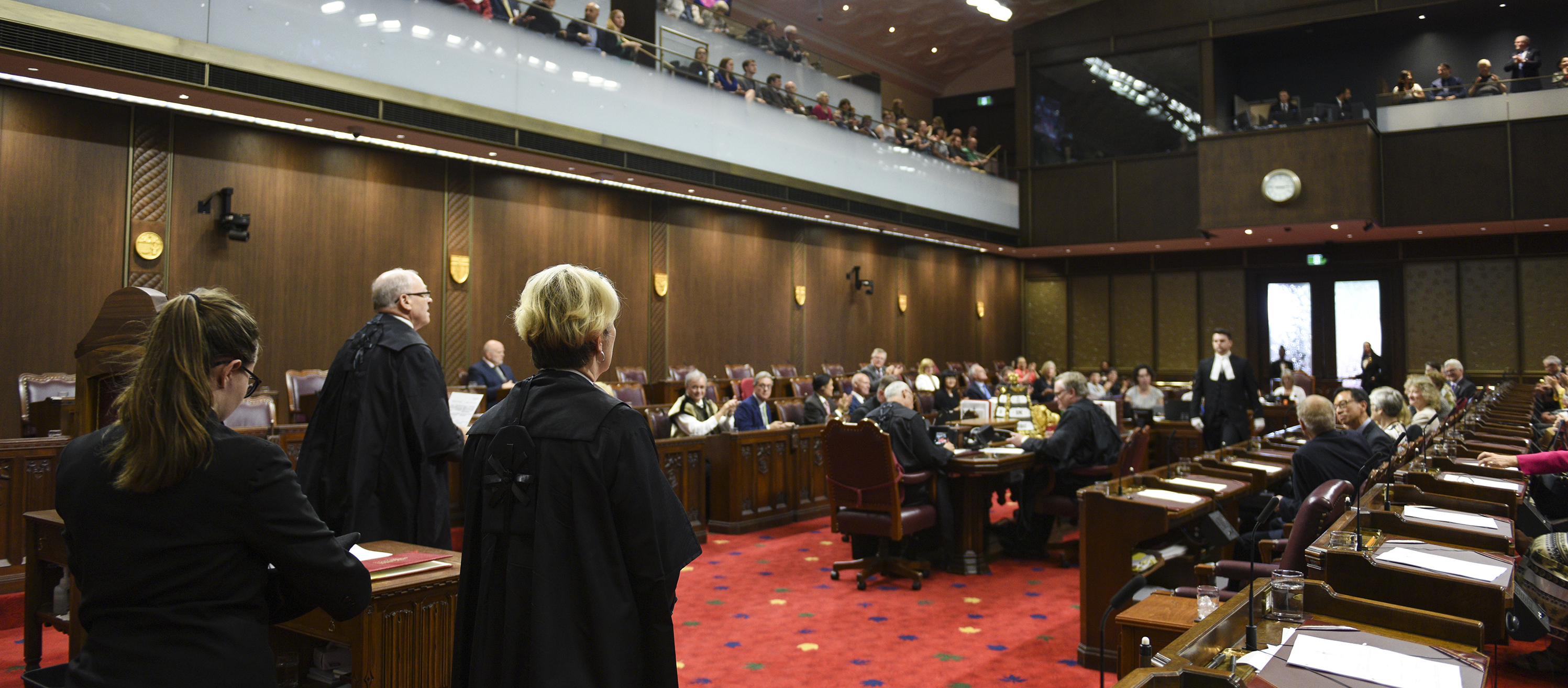How votes work in the Senate

The Senate plays a vital role in Canada’s Parliament. Both Senate and House of Commons bills are scrutinized and may be amended in the Red Chamber. New legislation can also be introduced in the Senate, and decisions are made on motions and committee reports.
In order to decide if a proposed bill, motion or report should be adopted, rejected or changed, senators hold votes. Two kinds of votes can be held: voice votes and standing votes.
When to hold a vote
The Speaker of the Senate opens debate in the Senate, providing senators with the opportunity to share their views on legislation and other important matters.
Once debate ends, the Speaker reads the motion on which senators are to decide and asks whether senators wish to agree to it. In many cases everyone agrees, meaning there is no dissension. However, a senator may say aloud “on division” to indicate there is not unanimity, which is recorded in the official record as approved or defeated on division.
If, however, the Speaker hears that there is dissension — usually expressed by calls of ‘no’— the Senate can proceed to a voice vote.
Voice votes
Voice votes are taken without recording senators’ names or the number of votes in favour or opposed.
The Speaker of the Senate asks all those in favour to say ‘yea’ and then for all those opposed to say ‘nay’. The Speaker then gives his assessment as to which response seems to represent the majority of senators present.
The Speaker then announces the decision whether the question is carried — meaning approved — or defeated.
If two or more senators rise following the Speakers’ announcement of the result of a voice vote, a standing vote will take place. If no request is made to hold a standing vote, the decision of the Speaker on a voice vote is final.
Standing votes
Standing votes involve the Clerk of the Senate recording the names of senators who vote to support a question, those who oppose it, and those who wish to abstain. The numbers are counted, providing a precise record of the vote.
When a standing vote is requested, the bells ring for a default period of 60 minutes to call senators to the Chamber. This gives senators time to review the motion they are voting on and to arrive in the Senate Chamber if they are attending committee meetings or conducting other business. The bells can be shorter if the Government and Opposition Whips agree, although senators must then agree on the shorter time. If there is no opposition, the bells will ring for the shorter time.
Once the bells have finished ringing, the Government and Opposition Whips normally walk down the centre aisle of the Senate Chamber and shake hands. Before a standing vote actually takes place, the Speaker announces the names of the senators present who have declared a private interest in the matter and who can therefore only abstain from voting. During a standing vote, the doors of the Senate Chamber are not locked, but only senators can enter.
The Speaker then reads the motion and asks senators to rise, beginning with all those who intend to vote ‘yea’, followed by the ‘nays’ and ending with those who wish to abstain. Senators have to vote from their assigned seats and cannot vote if, when the Speaker reads the question, they are not ‘within the bar’ — which means inside the brass bar at the entrance of the Senate Chamber.
Senators’ names are called one by one by a clerk at the table, while the Clerk of the Senate and other officials record the names. Once completed, the Clerk turns toward the Speaker and announces the results of the vote, in English and in French, in the same order as they were recorded: yeas, nays and abstentions. The Speaker then indicates whether the proposal was adopted or defeated.
The Speaker can vote with the other senators if he wishes, in which case he votes first. Should the Speaker wish to do so, another senator can temporarily assume the Speaker’s role. The Constitution and the Rules of the Senate stipulate that when there is a tie vote in the Senate (including the Speaker’s vote) the question is defeated.


